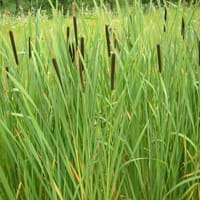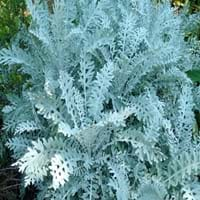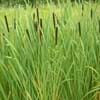Life Span
Perennial
Annual and Perennial
Type
Aquatics
Tender Perennial
Origin
World/Pandemic, North America, Caribbean, Europe, Northern Africa, Asia
Southern Europe, Mediterranean
Types
Not Available
Silver Lace, Cirrus
Number of Varieties
Not Available
Habitat
Boggy areas, Near ponds
Coastal Regions, Warmer regions
USDA Hardiness Zone
2-12
7-11
Sunset Zone
21,22
H1, H2, 8, 9, 10, 11, 12, 13, 14, 15, 16, 17, 18, 19, 20, 21, 22, 23, 24
Habit
Clump-Forming
Cushion/Mound-forming
Flower Color
Sienna, Chocolate
White, Yellow, Purple
Flower Color Modifier
Not Available
Bicolor
Fruit Color
Not Available
Tan
Leaf Color in Spring
Green
Blue Green, Silver
Leaf Color in Summer
Green
Blue Green, Silver
Leaf Color in Fall
Not Available
Blue Green, Silver
Leaf Color in Winter
Green
Light Green
Leaf Shape
Grass like
Irregular
Plant Season
Summer, Fall
Spring, Summer, Fall, Winter
Sunlight
Full Sun, Partial Sun
Full Sun
Type of Soil
Loam, Sand
Clay, Loam, Sand
The pH of Soil
Acidic, Neutral, Alkaline
Acidic, Neutral, Alkaline
Soil Drainage
Poorly Drained
Well drained
Bloom Time
Summer
Early Summer, Summer, Late Summer
Tolerances
Wet Site
Drought
Where to Plant?
Container, Ground
Container, Ground
How to Plant?
Divison, Seedlings
Seedlings, Stem Planting
Plant Maintenance
Medium
Medium
Watering Requirements
Does not require regular watering, Water Deeply
Do Not over Water, Never Over-water, Requires regular watering, Requires watering in the growing season, Water Deeply
In Summer
Lots of watering
Lots of watering
In Spring
Moderate
Moderate
In Winter
Average Water
Average Water
Soil pH
Acidic, Neutral, Alkaline
Acidic, Neutral, Alkaline
Soil Type
Loam, Sand
Clay, Loam, Sand
Soil Drainage Capacity
Poorly Drained
Well drained
Sun Exposure
Full Sun, Partial Sun
Full Sun
Pruning
Cut limbs, Remove damaged leaves, Remove dead branches, Remove dead leaves, Remove dead or diseased plant parts
Remove dead leaves, Remove deadheads
Fertilizers
All-Purpose Liquid Fertilizer, Apply 5-10-5 amounts, Apply N-P-K
fertilize every 2-3 weeks while growing, Nitrogen, Phosphorous, Potassium
Pests and Diseases
Red blotch
Blight, Downy mildew, Powdery mildew, Red blotch, Rust, White mold
Plant Tolerance
Wet Site
Drought
Flowers
Yes
Insignificant
Flower Petal Number
Not Available
Single
Edible Fruit
Not Available
No
Foliage Texture
Coarse
Medium
Foliage Sheen
Matte
Matte
Attracts
Birds
Flying insects, Insects
Allergy
Skin rash
Avoid during Pregnancy, Skin irritation, Skin rash, Toxic
Aesthetic Uses
Ground Cover, Showy Purposes
Showy Purposes
Beauty Benefits
Not Available
No Beauty Benefits
Environmental Uses
Air purification, soil stabilisation
Air purification, Food for insects, Prevent Soil Erosion
Medicinal Uses
anticoagulant, Astringent, Burns, Diuretic, Emmenagogue, Galactogogue, Haemostatic, Miscellany, Refrigerant, Sedative, Tonic, Vulnerary
Headache, Menstrual Disorders, Migraines
Part of Plant Used
Flowers, Leaves, Root, Seeds, Stem
Leaves
Other Uses
Fibre, For making oil, used for weaving hats, Used in biomass, Used in paper industry, Weaving into Mats and Bags
Employed in herbal medicine, Showy Purposes, Used as Ornamental plant, Used for its medicinal properties
Used As Indoor Plant
No
Yes
Used As Outdoor Plant
Yes
Yes
Garden Design
Dried Flower/Everlasting, Water Gardens, Wildflower
Bedding Plant, Container, Cutflower, Edging, Mixed Border, Rock Garden / Wall
Botanical Name
TYPHA latifolia
CENTAUREA cineraria
Common Name
Broadleaf Cattail, Common Cattail
Silver dust
In Hindi
Broadleaf Cattail
डस्टी मिलर
In German
Laub- Cattail
Dusty Miller
In French
broadleaf Cattail
Dusty Miller
In Spanish
Espadaña de hoja ancha
Dusty Miller
In Greek
πλατύφυλλων Cattail
Dusty Miller
In Portuguese
broadleaf Tifa
Dusty Miller
In Polish
Broadleaf Cattail
Dusty Miller
In Latin
broadleaf Cattail
Dusty Cicero
Phylum
Magnoliophyta
Anthophyta
Class
Liliopsida
Magnoliopsida
Family
Typhaceae
Asteraceae
Clade
Angiosperms, Commelinids, Monocots
Angiosperms, Asterids, Eudicots
Tribe
Not Available
Cynareae
Subfamily
Pitcairnioideae
Carduoideae
Number of Species
Not Available
Not Available
Season and Care of Broadleaf Cattail and Dusty Miller
Season and care of Broadleaf Cattail and Dusty Miller is important to know. While considering everything about Broadleaf Cattail and Dusty Miller Care, growing season is an essential factor. Broadleaf Cattail season is Summer and Fall and Dusty Miller season is Summer and Fall. The type of soil for Broadleaf Cattail is Loam, Sand and for Dusty Miller is Clay, Loam, Sand while the PH of soil for Broadleaf Cattail is Acidic, Neutral, Alkaline and for Dusty Miller is Acidic, Neutral, Alkaline.
Broadleaf Cattail and Dusty Miller Physical Information
Broadleaf Cattail and Dusty Miller physical information is very important for comparison. Broadleaf Cattail height is 182.88 cm and width 91.44 cm whereas Dusty Miller height is 20.30 cm and width 30.50 cm. The color specification of Broadleaf Cattail and Dusty Miller are as follows:
Broadleaf Cattail flower color: Sienna and Chocolate
Broadleaf Cattail leaf color: Green
Dusty Miller flower color: White, Yellow and Purple
- Dusty Miller leaf color: Blue Green and Silver
Care of Broadleaf Cattail and Dusty Miller
Care of Broadleaf Cattail and Dusty Miller include pruning, fertilizers, watering etc. Broadleaf Cattail pruning is done Cut limbs, Remove damaged leaves, Remove dead branches, Remove dead leaves and Remove dead or diseased plant parts and Dusty Miller pruning is done Remove dead leaves and Remove deadheads. In summer Broadleaf Cattail needs Lots of watering and in winter, it needs Average Water. Whereas, in summer Dusty Miller needs Lots of watering and in winter, it needs Average Water.





